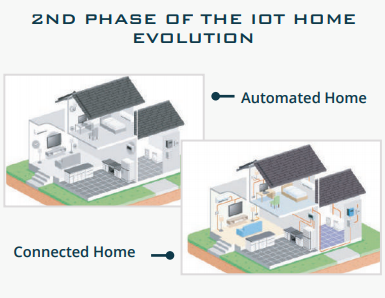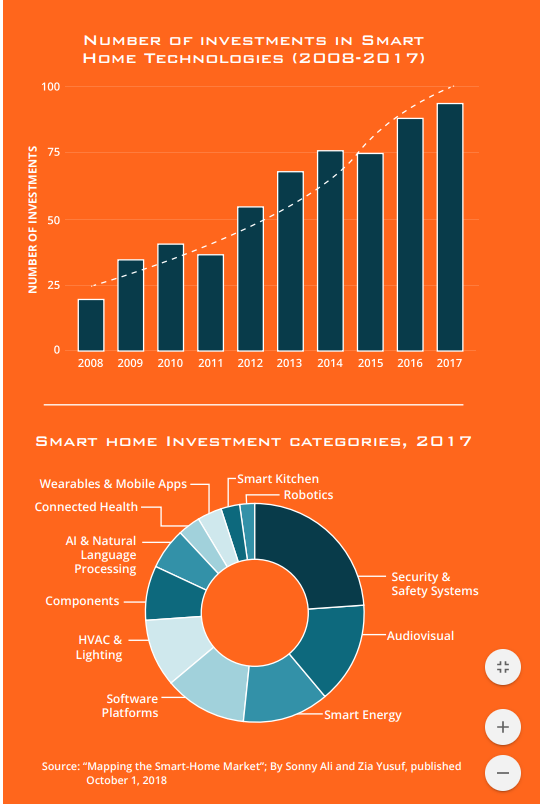
The smart home market, its challenges and opportunities, and a look into the future. Read the full State of IoT report at indianaiot.com.
It is important to first define the “smart home.” As in most cases, how you define it drives how you view it. A “smart home” is intuitive, aware, reactive, empathetic, seamless, and adaptable. It’s a big promise offering convenience, the ability to eliminate mundane tasks, and anticipation of the family’s needs. While the smart home has not yet been delivered, it is closer and headed in the right direction, encouraged by the mainstream attention companies like Amazon, Google, and Apple have brought to a mass market hungry for innovation.
We are now in the second phase of the IoT home evolution, having moved from an automated home to a connected home. Initially, home automation was primarily envisioned by early adopter tech fanatics who cobbled their own system together using products and proprietary user interfaces (touch screens, wall-mounted master controls or tablets and smart phones) to bring it together. Often hardwired, sometimes wireless, the automated home was always complicated, driven with push buttons to “set the scene,” and outdated the day it was installed. The automated home was composed of several single-use smart devices, including IoT-enabled thermostats, garage door openers, and locks which primarily functioned on their own through an app. As home automation devices have gained popularity, attention has turned to creating a connected home, aided by user-friendly interfaces, voice assistants and mobile applications, with more affordable and intuitive single-use products.
The residential Internet of Things (IoT) industry is certainly making progress but not yet delivering on the full promise of the IoT. However, venture investment, consumer acceptance, and commitment from both existing manufacturers and new entrants, point to fully realized smart homes in the near future. Investments into the smart home market –the lifeblood of innovation – are at record highs. As the chart in the top right indicates, the number of venture investments in global smart home technology has grown at an exponential rate over the past decade. In 2017 alone, there were almost 100 deals in this tech category. As you see in the bottom right chart, security and safety has become the largest category for investing. This investment is driving more innovation and resulting in smarter products. Homeowner acceptance, expectations, and desires for a smart home are rapidly growing globally. In our category, Schlage was an early leader in global security solutions for the IoT with products like Schlage Connect, Schlage Sense, and Schlage Control, while other Allegion brands, acquisitions (AXA and Milre), and investments (Yonomi, Nuki and Conneqtech) have further expanded its international footprint.




